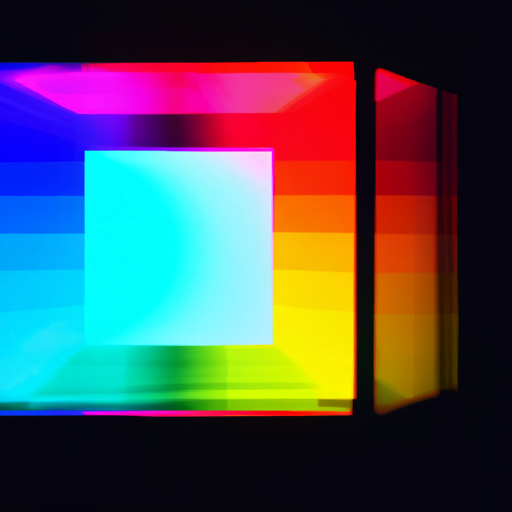-
Table of Contents
- Holographic Design: Bringing Illusion and Depth to Graphics
- Understanding Holographic Design
- Applications of Holographic Design
- 1. Advertising and Marketing
- 2. Entertainment and Events
- 3. Education and Training
- The Impact of Holographic Design
- 1. Enhanced User Experience
- 2. Increased Attention and Engagement
- 3. Improved Communication and Understanding
- Conclusion
Holographic Design: Bringing Illusion and Depth to Graphics
In the world of design, innovation is key to capturing the attention of audiences and creating memorable experiences. One such innovation that has gained significant traction in recent years is holographic design. Holographic design brings illusion and depth to graphics, creating a visually stunning and immersive experience for viewers. In this article, we will explore the concept of holographic design, its applications, and the impact it has on various industries.
Understanding Holographic Design
Holographic design is a technique that uses holography to create three-dimensional images or animations. It involves the use of light diffraction, interference, and reflection to produce the illusion of depth and movement. Unlike traditional two-dimensional graphics, holographic design adds an extra dimension, making the visuals appear more realistic and engaging.
One of the key elements of holographic design is the hologram itself. A hologram is a photographic recording of a light field, which appears as a three-dimensional image when illuminated with a specific light source. This light source can be a laser or even natural light. The hologram captures the interference pattern between the object being recorded and a reference beam of light, resulting in a realistic representation of the object.
Applications of Holographic Design
Holographic design has found applications in various industries, revolutionizing the way we interact with graphics and visuals. Let’s explore some of the key areas where holographic design is making an impact:
1. Advertising and Marketing
Holographic design has transformed the advertising and marketing landscape by providing brands with a unique and attention-grabbing way to showcase their products or services. Holographic displays can be used to create interactive and immersive experiences, allowing consumers to engage with the brand in a whole new way. For example, a holographic display in a retail store can showcase a product from different angles, giving customers a better understanding of its features and benefits.
One notable example of holographic design in advertising is the Tupac hologram performance at the Coachella music festival in 2012. The hologram of the late rapper appeared on stage and performed alongside live artists, creating a surreal and unforgettable experience for the audience.
2. Entertainment and Events
Holographic design has also made a significant impact in the entertainment industry. It has been used to bring deceased artists back to life on stage, allowing fans to experience their performances once again. For example, the holographic performances of Michael Jackson and Roy Orbison have captivated audiences around the world.
In addition to live performances, holographic design has also been used in events and exhibitions to create interactive and engaging displays. Holographic projections can be used to showcase information, tell stories, or create visually stunning effects that leave a lasting impression on attendees.
3. Education and Training
Holographic design has the potential to revolutionize education and training by providing immersive and interactive learning experiences. For example, medical students can use holographic simulations to practice surgical procedures in a realistic virtual environment. This allows them to gain hands-on experience and improve their skills before working with real patients.
Similarly, holographic design can be used in other fields such as architecture and engineering to visualize complex structures and designs. This enables professionals to better understand and communicate their ideas, leading to more efficient and effective collaboration.
The Impact of Holographic Design
The introduction of holographic design has had a profound impact on various industries. Here are some key ways in which holographic design is changing the game:
1. Enhanced User Experience
Holographic design takes user experience to a whole new level by creating immersive and interactive visuals. Whether it’s a holographic advertisement or a holographic performance, the depth and realism of the visuals captivate the audience, leaving a lasting impression. This enhanced user experience can lead to increased engagement, brand loyalty, and ultimately, higher conversion rates.
2. Increased Attention and Engagement
Holographic design has the power to grab attention and engage viewers in a way that traditional graphics cannot. The three-dimensional nature of holograms creates a sense of curiosity and intrigue, making people stop and take notice. This can be particularly beneficial in crowded environments where it’s challenging to stand out.
3. Improved Communication and Understanding
Holographic design has the potential to improve communication and understanding in various fields. Whether it’s explaining complex concepts in education or showcasing intricate designs in architecture, holographic visuals make it easier for people to grasp and comprehend information. This can lead to more effective learning, better decision-making, and improved collaboration.
Conclusion
Holographic design is a game-changer in the world of graphics and visuals. Its ability to create illusion and depth adds a new dimension to traditional two-dimensional graphics, resulting in visually stunning and immersive experiences. From advertising and marketing to entertainment and education, holographic design has found applications in various industries, revolutionizing the way we interact with graphics and visuals.
With its enhanced user experience, increased attention and engagement, and improved communication and understanding, holographic design is set to continue making waves in the design world. As technology advances and becomes more accessible, we can expect to see even more innovative and exciting applications of holographic design in the future.
